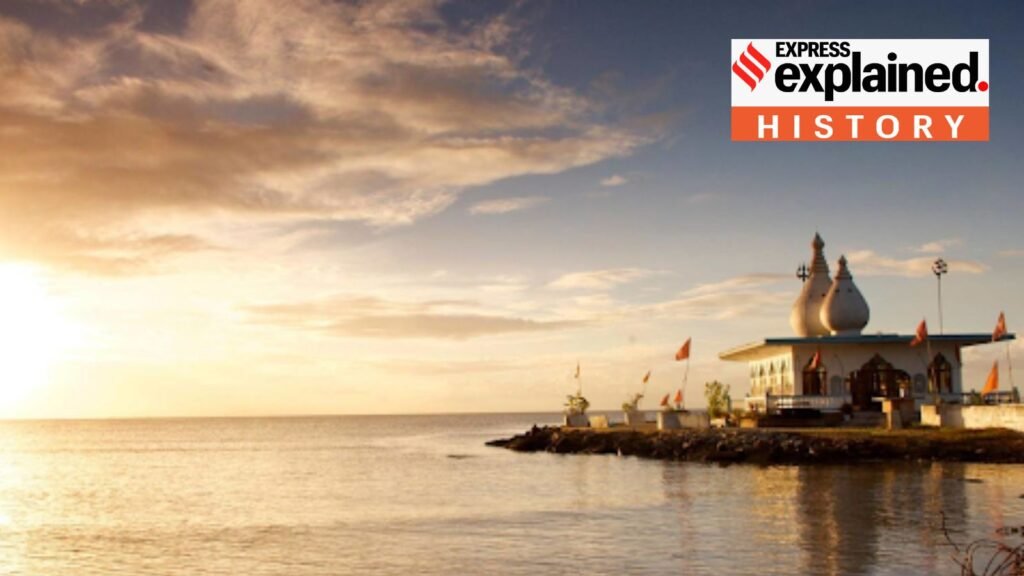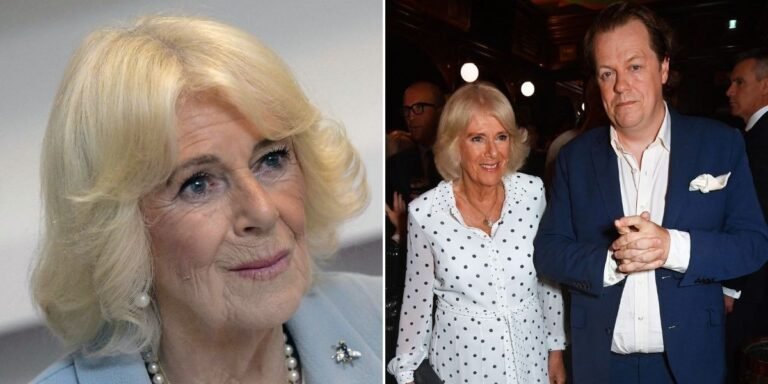
Addressing a large gathering of the Indian diaspora in Port of Spain, Trinidad, Prime Minister Narendra Modi mentioned several eminent personalities with Indian roots, including the mathematician and politician Dr Rudranath Capildeo (1920-70), the Trinidadian musician, ‘King of Chutney’ Sundar Popo, and the former West Indies batsman Daren Ganga.
Modi also mentioned the somewhat lesser-known Sewdass Sadhu, an indentured labourer who is credited with single-handedly building the famous “Temple in the Sea” in the Gulf of Paria, the shallow body of water between the island of Trinidad and Venezuela in the South American mainland.
We look at the story of Sewdass Sadhu, sometimes called the Dashrath Majhi of Trinidad & Tobago.
Temple in the Sea
Also known as Sewdass Sadhu Shiva Mandir, the temple off Waterloo, Carapichaima, south of Port of Spain, was first constructed in 1955. The temple, surrounded by the scenic waters of the Gulf of Paria, is connected to land by a walkway, somewhat like the Haji Ali dargah in Mumbai. The 85-foot Hanuman statue at the Dattatreya temple in Carapichaima stands nearby.
The Sewdass Sadhu Shiva Mandir is a spiritual and cultural landmark that attracts pilgrims and visitors from around the world. It has classic Hindu architectural features like domed mandaps, colourful gopurams (entrance towers that are a distinctive feature of Dravidian temple architecture), and ornate ceiling designs.
The temple becomes a vibrant hub during religious celebrations in the country, which has a significant Hindu population with Indian roots, especially during festivals like Diwali.
The Sadhu who built it
Sewdass Sadhu had constructed the first temple on the seashore in 1947, but it was demolished because it was built in MacMillan Park, a private property belonging to Tate and Lyle Limited, a leading sugar company, and Sadhu was sent to prison.
Story continues below this ad
But he was determined to build the temple, and subsequently built it the sea, arguing that the water does not belong to any one individual. He did this alone, over 25 long years, using only his bicycle to transport building material to the site where an octagonal, one-storey temple finally came up.
Sewdass Sadhu’s story echoes that of Dashrath Majhi, the “Mountain Man” of Bihar, who worked for 22 years with only a hammer and chisel to singlehandedly carve a path through rocks to connect his village Gehlaur to the city of Gaya.
The diaspora connect
Indian-origin people make up almost 40 per cent of the population of Trindad and Tobago. About half of all Indo-Trinidadians are Hindu; the rest are Muslim, Christian, Buddhist and Sikh.
The first Indians arrived in the islands in 1845, mainly from Bhojpur and Awadh regions in today’s Bihar and Uttar Pradesh respectively, as indentured labourers.
Story continues below this ad
In 2025, T&T is celebrating 180 years of the arrival of Indians. During his address, Prime Minister Modi announced that OCI cards would now be issued to the 6th generation of the people of Indian origin in Trinidad & Tobago. He also underscored that the Indian government will support several initiatives to nurture the Girmitiya legacy.




